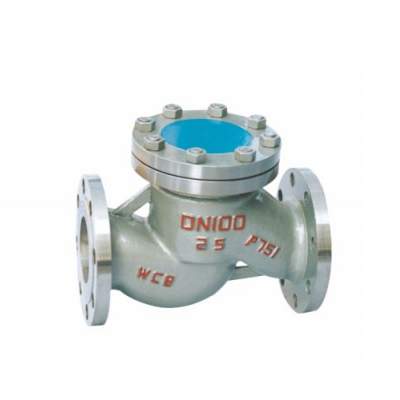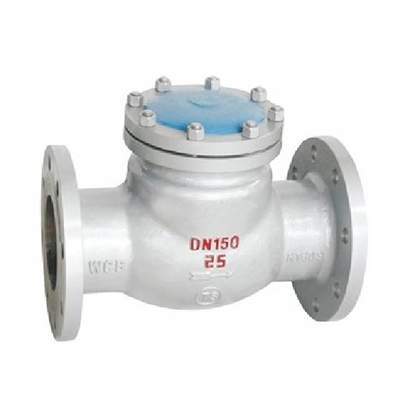Introduction

Small check valves, often overlooked in plumbing systems, play a crucial role in preventing backflow and ensuring the unidirectional flow of fluids. These compact devices are indispensable in various applications, from residential plumbing to industrial processes. In this comprehensive guide, we will delve into the benefits of using small check valves in plumbing systems, their working principles, and how they contribute to overall system efficiency and reliability. By understanding the advantages and proper application of small check valves, homeowners, plumbers, and industry professionals can optimize plumbing systems and safeguard against potential issues.
Understanding Small Check Valves
Before exploring the benefits, let’s delve deeper into the concept of a check valve. A check valve is a specialized type of valve designed to allow fluid flow in only one direction. When the flow reverses, the valve automatically closes, preventing backflow and ensuring the integrity of the plumbing system. Small check valves are specifically designed for smaller-diameter pipes, making them ideal for a wide range of residential and commercial applications.
How Small Check Valves Work
Small check valves operate on a straightforward yet effective principle. They typically consist of a valve body, a seat, and a disc or ball. When fluid flows in the intended direction, the pressure differential forces the disc or ball to lift off the seat, allowing the fluid to pass through unimpeded. However, when the flow reverses, the pressure differential changes, causing the disc or ball to be forced back onto the seat, effectively sealing the valve and preventing backflow.
Benefits of Using Small Check Valves
Preventing Backflow Contamination
One of the most significant advantages of check valves is their ability to prevent backflow contamination. Backflow occurs when fluids flow in the reverse direction, potentially introducing contaminants such as sewage, chemicals, or other harmful substances into clean water supplies. Small check valves act as a barrier, ensuring that contaminated fluids cannot enter clean water systems, safeguarding public health and protecting water quality.
Protecting Plumbing Systems
By preventing backflow, check valves also play a crucial role in protecting plumbing systems from damage. Backflow can lead to water hammer, a phenomenon characterized by sudden pressure surges that can cause significant damage to pipes, fittings, and appliances. Check valves help to mitigate these risks by absorbing the shock of sudden pressure fluctuations, reducing the likelihood of water hammer and extending the lifespan of plumbing components.
Enhancing System Efficiency
Small check valves can contribute to the overall efficiency of plumbing systems by preventing water from draining back into tanks or reservoirs. This helps to maintain system pressure, ensuring that there is always an adequate supply of water available for various applications, such as domestic use, irrigation, or industrial processes. By minimizing water loss, check valves can also help to reduce energy consumption and operating costs.
Extending Equipment Lifespan
By preventing backflow and protecting plumbing systems, check valves can help to extend the lifespan of pumps, valves, and other equipment. Backflow can cause premature wear and tear on these components, leading to frequent repairs and replacements. By mitigating the risks associated with backflow, check valves can help to reduce maintenance costs and downtime, ensuring the reliable operation of plumbing systems.
Compliance with Plumbing Codes
In many regions, plumbing codes require the installation of check valves to prevent backflow and protect public health. By using small check valves, homeowners, plumbers, and industry professionals can ensure that their plumbing systems comply with all relevant regulations, avoiding potential legal issues and fines.
Types of Small Check Valves
Small check valves come in various types, each with its own unique design and applications. Some common types include:
- Swing Check Valves: These valves feature a hinged disc that swings open to allow flow in one direction and closes to prevent backflow. They are suitable for a wide range of applications, including residential and commercial plumbing systems.
- Lift Check Valves: In these valves, a disc lifts off a seat to allow flow and drops onto the seat to prevent backflow. Lift check valves are often used in high-pressure applications, such as industrial piping systems.
- Ball Check Valves: A ball is used as the closing element in these valves. Ball check valves are compact and reliable, making them suitable for various applications, including water supply systems and irrigation systems.
Selection Criteria for Small Check Valves
When selecting a check valve for a specific application, several factors should be considered:
- Pipe Size: The check valve must be compatible with the pipe size in the plumbing system to ensure proper fit and function.
- Pressure Rating: The check valve should be rated for the maximum pressure that it will be exposed to in the system to prevent leaks and failures.
- Temperature Rating: The valve material should be suitable for the temperature range of the fluid being handled to avoid thermal stress and potential damage.
- Material Compatibility: The valve material should be compatible with the fluid being handled to prevent corrosion and other adverse reactions.
- Flow Rate: The check valve should have a sufficient flow capacity to meet the required flow rate of the system.
Installation and Maintenance

Correct installation is crucial for the optimal performance of small check valves. It is recommended to consult with a qualified plumber or follow the manufacturer’s instructions for proper installation. Regular maintenance, such as cleaning and inspecting the valve, can help to ensure its longevity and prevent issues such as clogging or malfunction.
Conclusion
Small check valves are essential components of plumbing systems, offering numerous benefits, including backflow prevention, system protection, and improved efficiency. By understanding the different types of small check valves, their selection criteria, and proper installation techniques, homeowners, plumbers, and industry professionals can optimize plumbing systems and safeguard against potential issues. Investing in high-quality small check valves is a wise decision that can save money, prevent costly repairs, and ensure the long-term reliability of plumbing systems.
FAQ
Where should I install a small check valve?
Small check valves are typically installed on the discharge side of pumps, at the base of vertical pipes, and in other locations where backflow is a concern.
How often should I replace a small check valve?
The lifespan of a small check valve depends on various factors, including the frequency of use, the quality of the water, and the materials used in its construction. However, it is generally recommended to inspect check valves regularly and replace them if they show signs of wear or damage.
Can I install a small check valve myself?
While it is possible to install a small check valve yourself, it is recommended to consult with a professional plumber, especially if you are unsure about the plumbing code requirements in your area.
